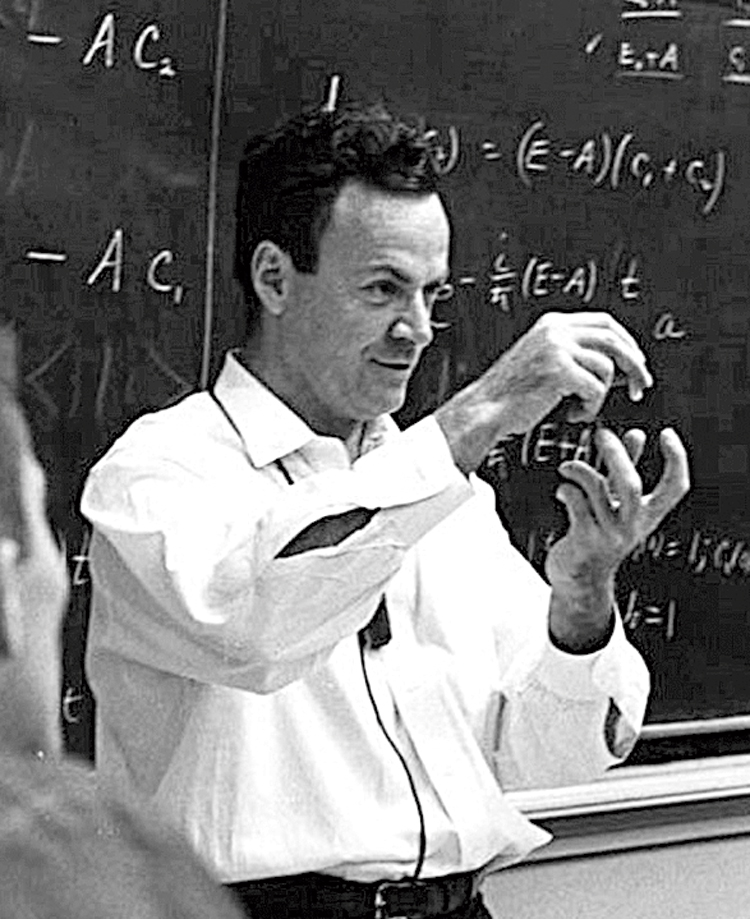If you want to learn a new or seemingly complex concept, try figuring out how you would teach it to a child in simple terms. It worked for renowned physicist and Nobel laureate Richard Feynman, who developed this technique to help himself learn effectively.
Feynman (1918-1988) was not just a physicist who pioneered the field of electrodynamics, he was a polymath —author, intellectual, philosopher and musician. His work has had direct influence on the fields of nanotechnology, quantum computing and particle physics. Known as the “Great Explainer” for his ability to clearly and succinctly explain complex topics such as quantum physics to even a freshman (US term for first-year undergrad) through simple illustrations, he invented the Feynman Diagram to visually explain the enigmatic behaviour of subatomic particles when he was barely 22 years old.
In Feynman’s Lost Lecture: The Motion of Planets Around the Sun — a book based on the physicist’s lecture notes and diagrams for a freshman physics audience —David Goodstein states that Feynman believed that if scientists or teachers are not able to explain complex concepts or ideas in the simplest of terms, it means they haven’t grasped it themselves.
The Feynman Technique is explained clearly in James Gleick’s 1993 biography, Genius: The Life and Science of Richard Feynman. “He opened a fresh notebook. On the title page, he wrote: NOTEBOOK OF THINGS I DON’T KNOW ABOUT. For the first but not last time he reorganised his knowledge. He worked for weeks at disassembling each branch of physics, oiling the parts, and putting them back together, looking all the while for the raw edges and inconsistencies. He tried to find the essential kernels of each subject,” writes Gleick of the method that helped Feynman excel at Princeton University, US.
Let’s take a look at the four steps of the Fenman Technique to understand everything:
Step 1: Take a sheet of paper. At the top, write the name of the concept in capital letters. While it was devised by a physicist, you can apply this method to learn a topic from any discipline, not just maths or science.
Step 2: Try to explain the idea in your own words as if you were teaching it to, say, 12-year-old children in a classroom. Use language that’s plain and simple. Try to think of examples or analogies from your surroundings and put things in local context. Add an anecdote or two to pep this up into a story.
Step 3: Review your work thoroughly and see if you have any doubts. Go back to the source material to fill up the gaps in your comprehension; make suitable changes to your notes. Add and alter to shore up your understanding.
Step 4: Check if any technical terms have slipped into your description. Rewrite those and make sure that you can explain the topic even to someone without a basic understanding of it.
Take, for example, the Pythagorean Theorem. First, write the topic on top of a blank sheet of paper. Try to write the definition is your own words: For any triangle with a right angle (draw a small triangle on the margin of the sheet with the right angle marked), you can find out the squared length of the longest side (also called hypotenuse) by adding together the squared lengths of the other two sides.
Draw the triangle with three sides marked A, B and C (hypotenuse) and write down the formula A2+B2=C2. Explain this with a set of numbers (42+32=52). To make it interesting you can add a footnote on how the Egyptians may have used wooden right-angled triangles during the construction process of pyramids to determine the slopes. Also, you can add how this can help children find out the long side of a triangular playground in the neighbourhood.
The Feynman Technique forces you to collect information, process it and ruminate over it. Just remember Feynman’s quote: If you can’t explain it in simple words, you don’t understand it well enough.











